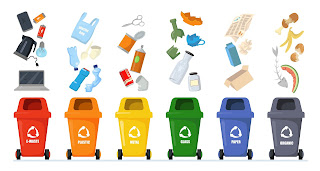The Growing Problem of Textile Waste in Landfills
In the age of fast fashion and disposable trends, the environmental cost of our clothing habits is becoming impossible to ignore. Every year, millions of tons of garments are discarded globally, and a significant portion of this waste ends up buried beneath our feet. Textile waste in landfills is a pressing environmental issue, yet it remains widely underdiscussed in comparison to other forms of pollution. The reality is that clothes, once tossed away, do not simply disappear, they linger, leaching dyes and chemicals into the earth for decades.
Landfills are not designed to process textiles efficiently. Most fabrics, especially those blended with synthetic fibers like polyester or spandex, are not biodegradable. It can take anywhere from 20 to 200 years for textiles to break down, depending on the material. During this time, they release greenhouse gases like methane and contaminate nearby soil and water systems. Even natural fibers, such as cotton, when treated with dyes and finishes, contribute to toxic landfill runoff. The visual of landfills overflowing with faded t-shirts, worn-out jeans, and unsold merchandise paints a stark picture of modern overconsumption.
What makes this situation even more alarming is that a large share of this waste is preventable. According to the EPA, only about 15% of textile waste in the United States is recycled or reused, while the remaining 85% is either incinerated or sent to landfills. That means billions of pounds of usable fabric are wasted every year. Much of this discarded clothing is perfectly wearable or easily repurposed, yet ends up trashed due to lack of awareness, infrastructure, or incentives to recycle.
This isn’t just a household problem. Businesses and brands also play a major role in generating textile waste. Unsold inventory, defective products, overstock, and branded apparel often get destroyed en masse to protect brand value or due to logistical challenges. These practices contribute significantly to the volume of textile waste in landfills, revealing the need for corporate accountability and innovative solutions.
Addressing the crisis of textile waste requires a multifaceted approach, consumer education, improved recycling infrastructure, policy changes, and most importantly, a shift in how we view clothing itself. Clothing should not be seen as disposable, but as a resource with value beyond its first use. Upcycling, donating, reselling, and recycling are powerful alternatives to the trash bin. More people and companies must adopt these circular practices if we want to reduce the burden on landfills and the planet.
That’s where organizations like SwagCycle come in. SwagCycle provides businesses with sustainable solutions for excess branded merchandise, helping them avoid landfill disposal by facilitating donation, recycling, or upcycling. Instead of sending unsold items to the dump, companies can now choose a responsible path that aligns with both their environmental goals and brand values. As the issue of textile waste in landfills grows more urgent, it’s clear that solutions like those offered by SwagCycle are not just helpful, they’re essential.




Comments
Post a Comment